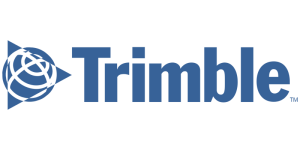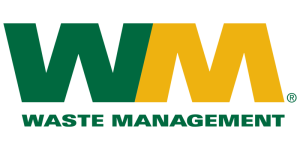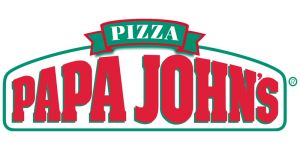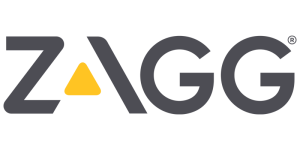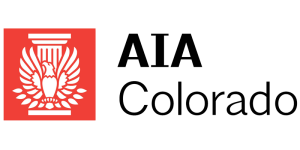Can 503 status code errors limit the crawling and indexing of web pages in 2024?
In the ever-evolving landscape of digital marketing, search engines remain the gatekeepers of the internet, determining which content reaches the coveted first page and captures the attention of potential customers. As businesses like JEMSU, a leading full-service digital advertising agency, strategize to navigate the complexities of search engine optimization (SEO) in 2024, a technical dilemma looms large: the impact of 503 status code errors on website performance, particularly regarding the crucial processes of crawling and indexing by search engines.
These HTTP response status codes, designated ‘503 Service Unavailable’, can signal to search engine bots that a site is temporarily out of service for maintenance or overloading issues. While this is a standard part of web operations, the frequency, duration, and handling of such errors could have significant repercussions. For companies like JEMSU, which prioritize ensuring that clients’ websites maintain optimal visibility and accessibility, understanding the implications of these errors is essential for sustaining a site’s search engine rankings and online presence.
As we edge closer to 2024, with search algorithms growing ever more sophisticated, the question that looms for SEO experts and webmasters alike is whether these temporary setbacks can lead to lasting damage in a site’s SEO efforts. Can 503 status code errors inadvertently become a barricade to a website’s success by limiting the essential functions of crawling and indexing? JEMSU dives into this query, dissecting the potential consequences of these errors and providing foresight into how to mitigate any negative impact on a website’s search engine performance.
Table of Contents
1. Understanding HTTP Status Codes and SEO
2. Impact of 503 Service Unavailable Status on Search Engine Bots
3. Best Practices for Handling 503 Errors to Maintain SEO Rankings
4. The Role of Website Downtime in Search Engine Indexing
5. Strategies for Communicating Site Maintenance to Search Engines
6. Monitoring and Minimizing the SEO Effects of 503 Errors
7. FAQs
Instant SEO Checker + Score & Report
Enter the URL of any landing page to see how optimized it is for one keyword or phrase...
Understanding HTTP Status Codes and SEO
In the ever-evolving world of digital marketing, it’s vital for businesses like JEMSU to stay abreast of the nuances that can impact a website’s search engine optimization (SEO). One such detail is the understanding of HTTP status codes, which are essential indicators of a website’s health and accessibility to both users and search engine bots. An HTTP status code is a server’s response to a browser’s request and can affect how a website is crawled and indexed.
When it comes to SEO, these status codes can be the difference between a page that ranks well and one that is virtually invisible in search results. Among these codes, the 503 status signifies ‘Service Unavailable’, which is a temporary response given when a server is not ready to handle the request due to maintenance or overload. While this is a temporary issue, it’s crucial for companies like JEMSU to understand the implications of such errors on a site’s SEO performance.
Consider this analogy: If your website is a brick-and-mortar store, then HTTP status codes are like the signs you put up on your door. A ‘503 Service Unavailable’ status code is akin to a “We’ll be back soon” sign. It informs visitors—and, in the digital space, search engine bots—that the current inaccessibility is temporary. However, just as prolonged closure signs can deter customers from returning, frequent 503 errors can make search engines less likely to visit and index the website’s content.
In the context of SEO, JEMSU focuses on minimizing the potential negative impacts of 503 errors by ensuring that they are properly communicated to search engines as temporary. This involves setting the correct Retry-After header, which tells search bots when to return for successful crawling. Moreover, JEMSU helps to analyze web server logs to track the occurrence of these errors and address them promptly.
Examples of how 503 errors can impede SEO efforts include interruptions in the indexing process, which can lead to a reduction in the freshness of the search engine’s version of the site. Also, if a significant portion of a site is returning 503 responses over an extended period, search engines might deem the site unreliable and reduce its overall visibility in search results.
In summary, understanding HTTP status codes, particularly the 503 error, is essential for SEO specialists at JEMSU to maintain and improve a website’s search engine rankings. It’s not just about fixing errors as they arise; it’s about proactively managing a site’s infrastructure to prevent these issues from occurring in the first place, thus ensuring a seamless user experience and consistent search engine visibility.
Google Ads Success Example
The Challenge: The Challenge: Increase new dental patients with better Google Ads campaigns.
Impact of 503 Service Unavailable Status on Search Engine Bots
When a website serves a 503 Service Unavailable status code, it is essentially communicating to search engine bots that the site is temporarily unavailable due to maintenance or server overload. This temporary status is crucial because it informs the crawlers that the condition is not permanent and that they should return at a later time to index the content. However, the impact of a 503 error on search engine optimization (SEO) can be significant if not properly managed.
At JEMSU, we understand that a 503 status code serves as a temporary stop sign to search engine bots. If a website is down only briefly, the search engines, like Google, will acknowledge the site’s temporary state and typically come back to re-crawl the pages once the site is back online. It’s akin to a store putting up a “Be Right Back” sign; customers are informed that service will resume shortly. However, if the site remains unavailable for an extended period, the bots may reduce the frequency of their visits, which can lead to a decline in the site’s search rankings. In the world of SEO, this is equivalent to a store being closed too often, leading to a drop in regular customers.
According to Google’s guidelines, a 503 status should be used whenever a site is temporarily unavailable, especially during site maintenance or downtime. JEMSU takes this recommendation seriously, advising clients to ensure that their server correctly returns a 503 response during any planned outages. This is critical because prolonged and repeated 503 errors without proper communication can lead to a loss of trust by the search engines. Imagine inviting a friend over repeatedly only to find you’re not home each time; eventually, they might stop coming.
Examples of the correct use of a 503 status can be seen during website updates or migrations. For instance, an e-commerce site undergoing a major overhaul during the off-peak hours could serve a 503 status to inform search engine bots of the temporary unavailability. JEMSU emphasizes to its clients the importance of also using a retry-after HTTP header to indicate how long the site is expected to be down. This additional piece of information can be instrumental in ensuring that search engine bots know when to return, thus minimizing any negative SEO impact.
In summary, while a 503 Service Unavailable status can limit the crawling and indexing of web pages if mishandled, proper use of the status code can communicate the temporary nature of site downtime to search engine bots, thus safeguarding a site’s SEO integrity. JEMSU works diligently to ensure that clients understand and correctly implement this and other HTTP status codes to maintain optimal search engine visibility, even during periods of unavoidable downtime.
Best Practices for Handling 503 Errors to Maintain SEO Rankings
When a website experiences downtime, whether it’s for maintenance or because of an unexpected outage, it’s crucial to handle the situation properly to minimize the impact on SEO rankings. At JEMSU, we understand the importance of maintaining visibility in search engine results pages (SERPs), and that’s why we advocate for best practices when dealing with 503 errors.
A 503 Service Unavailable status code indicates to search engine bots that the site is temporarily unavailable. Unlike permanent error codes, this doesn’t mean the content has been removed, but rather that there is a temporary interruption. It’s the digital equivalent of putting a “Be Right Back” sign in your storefront window. However, if not managed correctly, it can lead to a decrease in search rankings as search engines could interpret the site as unreliable.
One best practice is to ensure the server returns the correct 503 HTTP status code during periods of downtime, signaling to search engine bots that the condition is temporary. This can prevent the bots from de-indexing the pages. Another strategy we at JEMSU emphasize is the use of a Retry-After header in the response, which indicates to the bots when they should attempt to crawl the site again.
Communicating the expected duration of the downtime can be likened to giving a heads-up to your guests that the party is still on, just starting a little later than planned. By implementing this, we create a better understanding between the website and search engine crawlers, potentially preserving the site’s standing in search results.
Moreover, while a site is down, it’s essential to provide users with a friendly and informative maintenance page. Not only does this maintain a professional look for human visitors, but it can also include important information for search engine bots. For example, including a message that the site is under temporary maintenance can be helpful.
At JEMSU, we advise clients to monitor their site’s accessibility closely and to be proactive about addressing issues that could lead to 503 errors. This includes having a robust hosting solution and a plan for scaling resources during traffic surges. By being prepared and responsive, businesses can ensure that 503 errors do not negatively impact their SEO efforts.
In conclusion, by following these best practices for handling 503 errors, JEMSU helps businesses maintain their SEO rankings even during periods of website downtime. Utilizing correct HTTP status codes, informative maintenance pages, and clear communication with search engines are all critical steps in safeguarding a site’s SEO health.
SEO Success Story
The Challenge: The Challenge: Design an SEO friendly website for a new pediatric dentist office. Increase new patient acquisitions via organic traffic and paid search traffic. Build customer & brand validation acquiring & marketing 5 star reviews.
The Role of Website Downtime in Search Engine Indexing
When it comes to the role of website downtime in search engine indexing, it is crucial for businesses to understand the potential consequences that extended periods of inaccessibility can have on their online visibility. At JEMSU, we emphasize the importance of maintaining a stable online presence to ensure that search engine bots can consistently crawl and index web pages.
Website downtime, even if temporary, can send a signal to search engines that a site is unreliable or not maintained properly. When a search engine bot encounters a 503 Service Unavailable status code, it understands that this is a temporary issue and typically will come back later to attempt to crawl the pages again. However, if the downtime persists, the bot may reduce the frequency of its visits, presuming that the site is often unavailable or has ongoing issues.
Imagine a storefront that is frequently closed when customers try to visit. Over time, potential customers would likely stop coming by, assuming that it’s not worth the effort since the store is often closed. Similarly, search engine bots, when repeatedly encountering downtime, might de-prioritize the crawling of the site, which can lead to a decrease in the website’s search engine rankings.
JEMSU recognizes that while occasional brief periods of downtime for maintenance or updates are normal, it’s essential to mitigate the impact on SEO. For example, during a planned downtime, a website can use a temporary 503 status code alongside a ‘Retry-After’ HTTP header to inform bots when to return, effectively communicating the expected duration of the outage. This strategy can help maintain the trust of search engines in the site’s reliability.
Moreover, statistics show that site speed and availability are critical factors in user experience and search engine rankings. According to data from Google, a site that loads in five seconds, compared to one that loads in 19, sees 70% longer average sessions. Thus, extended downtime not only affects the crawling frequency but could also lead to a poorer user experience, further impacting SEO performance.
At JEMSU, we advise our clients to carefully monitor their site’s uptime and quickly address any issues that could lead to extended downtime. Utilizing proper monitoring tools can alert website owners the moment a site goes down, allowing for swift action to restore service and minimize the SEO impact. By proactively managing these risks, businesses can ensure their site remains in good standing with search engines and their users.
Jemsu has been a great asset for us. The results have grown at strong positive linear rate. They have been extremely accessible, flexible, and very open about everything. Natalya is a star example of how to work with your accounts to drive them forward and adjusts to their quirks. Jaime is able to clearly communicate all of the work that is being done behind the scenes and make sure that all of my team is understanding.
I couldn’t be more pleased with my JEMSU Marketing Team!
Julia, Tamara, Joelle and Dally have exceeded my expectations in professionalism, creativity, organization, and turn around time with my Social Media Management project.
I have thoroughly enjoyed sharing my journey with this team of empowered women!
Thank you JEMSU! Your team designed and launched my new website, and developed strategies to drive traffic to my site, which has increased my sales. I highly recommend your Website & SEO Agency!
Jemsu has always been professional and wonderful to work with on both the SEO and website design side. They are responsive and take the time to explain to us the complicated world of SEO.
Jemsu is an excellent company to work with. Our new website blows away our competition! Unique, smooth, and flawless. Definite wow factor!
The folks at JEMSU were excellent in designing and launching our new website. The process was well laid out and executed. I could not be happier with the end product and would highly recommend them to anyone.
Jemsu is a great company to work with. Two prong approach with a new site and SEO. They totally redesigned my website to be more market specific, responsive, and mobile friendly. SEO strategy is broad based and starting to kick in. My marketing will also be adding Facebook and Google ads in the coming weeks. Thanks for your all you hard work.
JEMSU has wworked with our team to create a successful campaign including incorporating an overall rebranding of our multiple solutions. The JEMSU team is embracing of our vision and responds timely with life of our ideas.
JEMSU is great company to work with. They listen & really work hard to produce results. Johnathan & Sasha were such a big help. If you have a question or concern they are always there for you.
I would definitely recommend them to anyone looking to grow their company through adwords campaigns.
Jemsu have exceeded our expectations across all of our digital marketing requirements, and I would recommend their services to anyone who needs expertise in the digital marketing space.
JEMSU was able to quickly migrate my site to a new host and fix all my indexation issue. I look forward to growing my services with JEMSU as I gain traffic. It’s a real pleasure working with Julian and Juan, they’re both very professional, courteous and helpful.
JEMSU is incredible. The entire team Is professional, they don’t miss a deadlines and produce stellar work. I highly recommend Chris, Rianne, and their entire team.
We’ve been working with JEMSU for about five months and couldn’t be happier with the outcome. Our traffic is up and our leads are increasing in quality and quantity by the month. My only regret is not finding them sooner! They’re worth every penny!
Strategies for Communicating Site Maintenance to Search Engines
When it comes to site maintenance, one crucial aspect that businesses like JEMSU focus on is minimizing the negative impact on SEO. Communicating site maintenance effectively to search engines is pivotal to ensure that temporary downtime does not lead to long-term setbacks in search engine rankings. The 503 status code, which indicates that a service is unavailable, is particularly useful in such situations. It serves as a signal to search engines that the condition is temporary, and they should return later to crawl and index the pages.
Implementing a 503 status code during planned maintenance windows is one of the recommended strategies. This informs search engine bots that the unavailability of the site is not a permanent issue, and they should try to access the site again at a later time. For instance, Google’s search bots understand that a 503 status indicates maintenance and will typically come back to re-crawl the pages once the service is restored. To put this into perspective, think of the 503 status as an ‘Out to Lunch’ sign for your website. It tells Google that you haven’t closed shop; you’re just taking a short break.
Moreover, JEMSU emphasizes the importance of timing when it comes to maintenance. Performing updates during off-peak hours can limit the impact on both users and search engine crawlers. This can be likened to choosing to renovate a store overnight rather than in the middle of the day. It’s less disruptive and ensures that when customers return, they will find a fully functional and improved experience.
Another strategy involves the use of the Retry-After HTTP header, which can be included when returning a 503 status. This header indicates to the search engine how long it should wait before attempting to access the site again. By providing a specific timeframe, you can manage the expectations of search engine bots, much like giving your customers a clear indication of when a new product will be back in stock.
In addition to these technical measures, maintaining clear communication with users through status pages or social media updates is also vital. It’s essential that customers and search engines alike are aware of the maintenance and the anticipated duration. An example of this could be a retailer posting a notice about their upcoming website updates, ensuring their customers know exactly when they can resume shopping.
Overall, while a 503 status code can present challenges, with the right strategies in place, businesses like JEMSU can navigate these periods of downtime without sacrificing their hard-earned search engine presence. By effectively communicating with search engines and users alike, the impact on SEO can be minimized, allowing the focus to remain on providing an excellent user experience post-maintenance.
SEO Success Story
The Challenge: Increase dent repair and body damage bookings via better organic visibility and traffic.
Monitoring and Minimizing the SEO Effects of 503 Errors
In the fast-paced world of digital marketing, maintaining optimal website performance is crucial. One of the challenges that businesses and digital agencies like JEMSU face is managing and mitigating the impact of 503 errors on SEO. A 503 status code indicates that a server is temporarily unable to handle the request due to maintenance or overload, which can potentially limit the crawling and indexing of web pages by search engine bots.
When it comes to monitoring these errors, JEMSU recognizes the importance of having robust systems in place. Think of a 503 error like a detour sign on the highway; it tells the search engine bots that they need to come back later. If the detour persists, drivers (or in this case, bots) may choose a different route, which can lead to less frequent visits to your site and potentially impact your search engine visibility. To prevent this, JEMSU utilizes advanced monitoring tools that alert the SEO team immediately when a 503 error occurs. This rapid response enables quick actions to resolve the issue and communicate with search engines appropriately.
Minimizing the SEO effects of these errors is also a pivotal part of JEMSU’s strategy. One effective approach is the implementation of a staggered maintenance schedule. This can help ensure that server downtime for updates or fixes occurs during off-peak hours, reducing the likelihood of a search bot encountering a site that is temporarily unavailable. Additionally, JEMSU advises clients on the correct use of HTTP headers. By sending the Retry-After header with a 503 response, search engines can be informed of the expected duration of the downtime, thus helping to manage the bot’s crawling schedule more effectively.
Moreover, JEMSU stresses the need for clear communication with search engines during planned maintenance. By using tools such as Google Search Console to signal when a site is going down for maintenance, JEMSU helps to ensure that the temporary unavailability does not harm the site’s SEO performance.
In an example of proactive management, JEMSU once assisted a major e-commerce client during a site upgrade, which necessitated several periods of downtime. By carefully planning the maintenance windows and setting up the appropriate 503 responses, along with the Retry-After headers, the SEO team at JEMSU was able to minimize disruptions to search engine indexing. The client’s site maintained its ranking positions, and the upgrade was completed without any significant SEO setbacks.
In essence, by closely monitoring and strategically managing 503 errors, JEMSU helps clients to safeguard their SEO investments and ensures that temporary server issues do not translate into long-term visibility problems.
FAQS – Can 503 status code errors limit the crawling and indexing of web pages in 2024?
1. **What is a 503 status code error?**
A 503 status code error is an HTTP response status code that indicates that the server is currently unable to handle the request due to temporary overloading or maintenance of the server.
2. **Can a 503 status code affect website crawling and indexing?**
Yes, a 503 status code can affect website crawling and indexing. Search engine crawlers may interpret the 503 error as a temporary issue and typically will retry to crawl the pages later. However, if the error persists for an extended period, it can negatively impact the indexing of the web pages.
3. **How long can a website return a 503 status before affecting SEO?**
The impact on SEO can start if a 503 status persists for a prolonged time. Search engines like Google understand that sites may go down temporarily, so a short period of 503 responses (e.g., a few hours to a day) should not significantly impact SEO. However, if the status continues for days, it may lead to a decrease in the crawl frequency and potential de-indexing of the pages.
4. **Should I use a 503 status code during website maintenance?**
Yes, if you are performing scheduled maintenance, it is best practice to return a 503 status code. This lets search engines know that the unavailability is temporary and that they should try to crawl the pages again later.
5. **What can I do to minimize SEO damage when my site returns a 503 status?**
To minimize SEO damage, ensure that the 503 status is used correctly during actual downtime and for the shortest time possible. Additionally, you can set a “Retry-After” header to inform crawlers when to come back, and make sure to communicate to users and search engines that maintenance is temporary.
6. **Will search engines stop crawling my site after a 503 error?**
Search engines will not immediately stop crawling your site after encountering a 503 error. They typically retry several times and spread out their attempts to check if the site has come back online. However, persistent 503 errors over a long period can lead to reduced crawling and eventual de-indexing of content.
7. **How can I monitor whether a 503 error is affecting my site’s indexing?**
You can monitor the effect of 503 errors on your site’s indexing using tools like Google Search Console. This tool can alert you to crawl errors and show you how your site’s indexing is being impacted.
8. **Is there a difference between a 503 error and other 5xx errors in terms of SEO impact?**
Yes, there is a difference. A 503 status is understood to be temporary, and search engines are more likely to retry crawling later. Other 5xx errors, like a 500 (Internal Server Error) or a 504 (Gateway Timeout), can be seen as more severe, indicating server-side issues that might not be resolved quickly, thus potentially having a more significant negative impact on SEO.
9. **Do 503 status codes affect both Googlebot and other search engine crawlers?**
Yes, 503 status codes affect all search engine crawlers, not just Googlebot. However, different search engines may have different policies and thresholds for retrying to crawl and index web pages after encountering a 503 error.
10. **Can implementing a custom error page help with 503 status codes?**
Implementing a custom error page can help communicate more effectively with users when a 503 status is encountered. While it does not directly impact how search engines handle the error, a custom error page can improve the user experience and provide information on when the site might be available again.
SEO Success Story
The Challenge: Increase new dental patients with better organic visibility and traffic.
